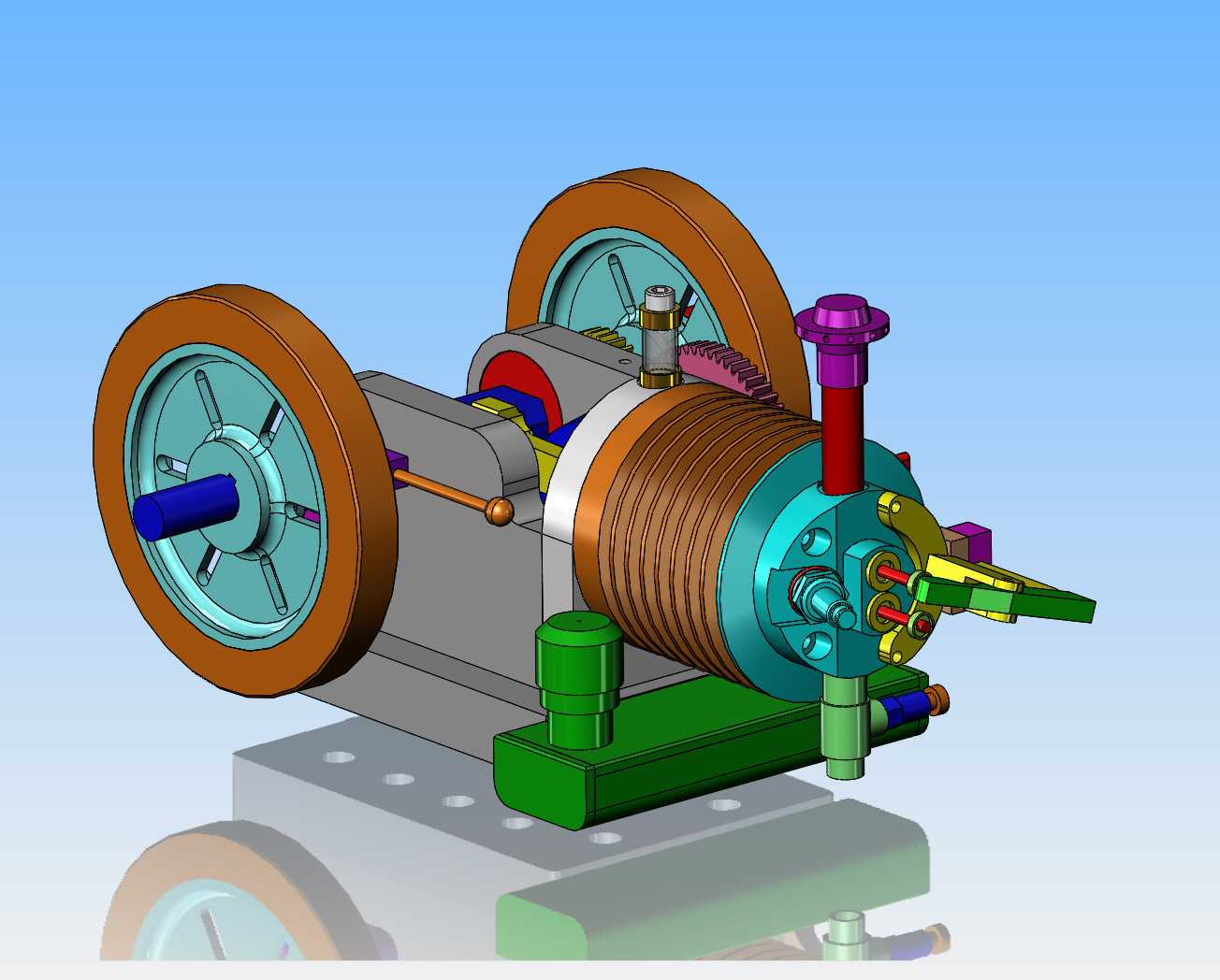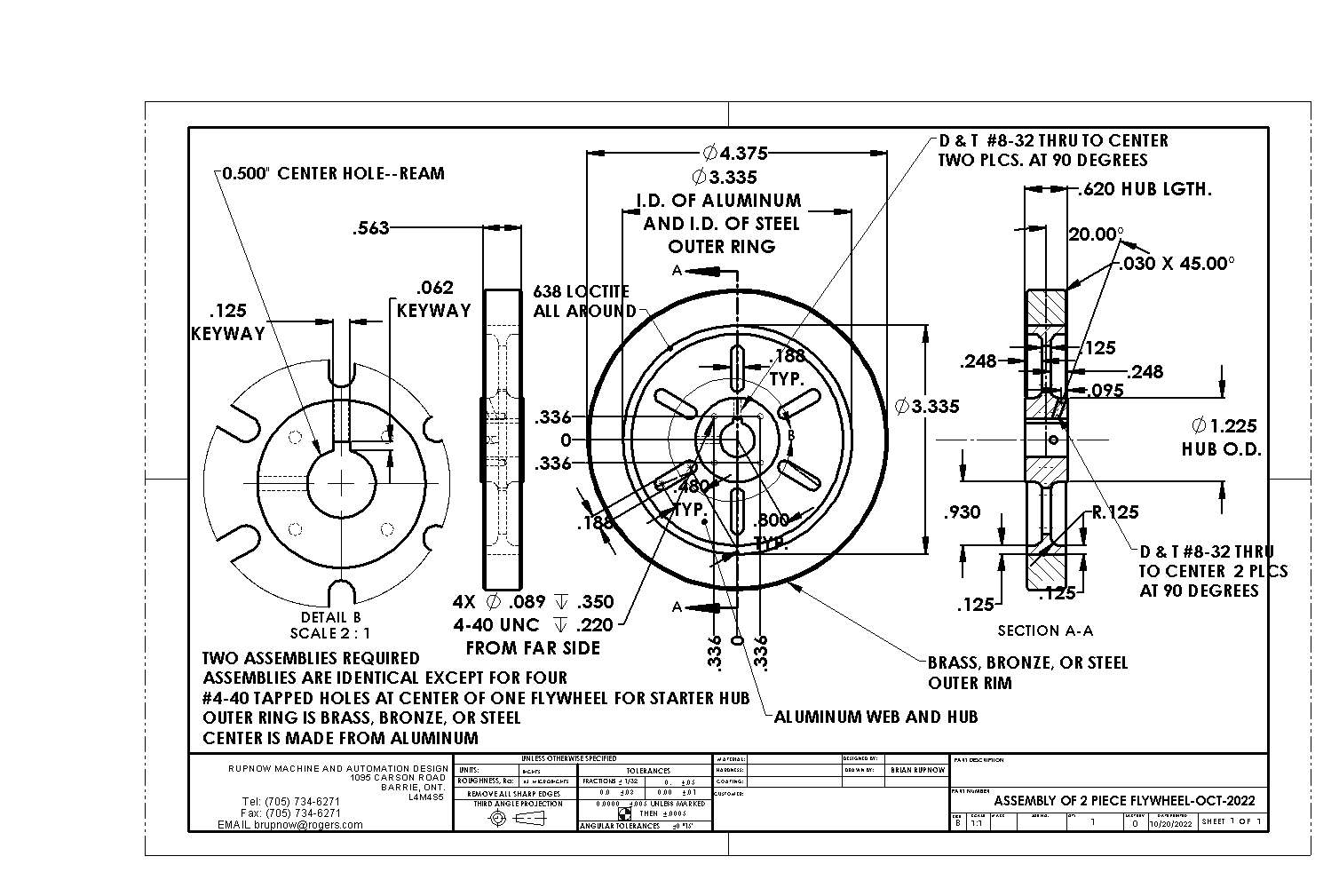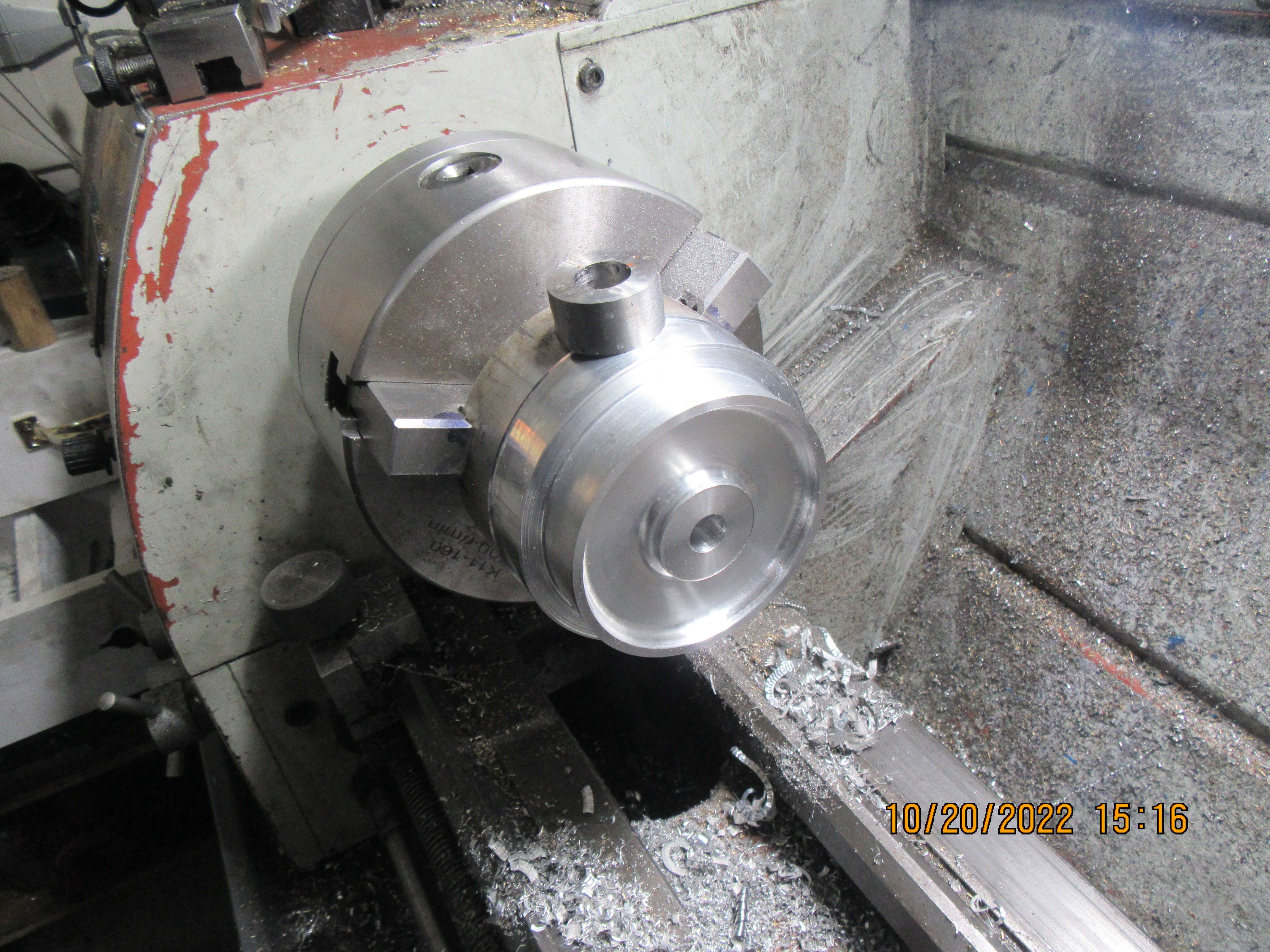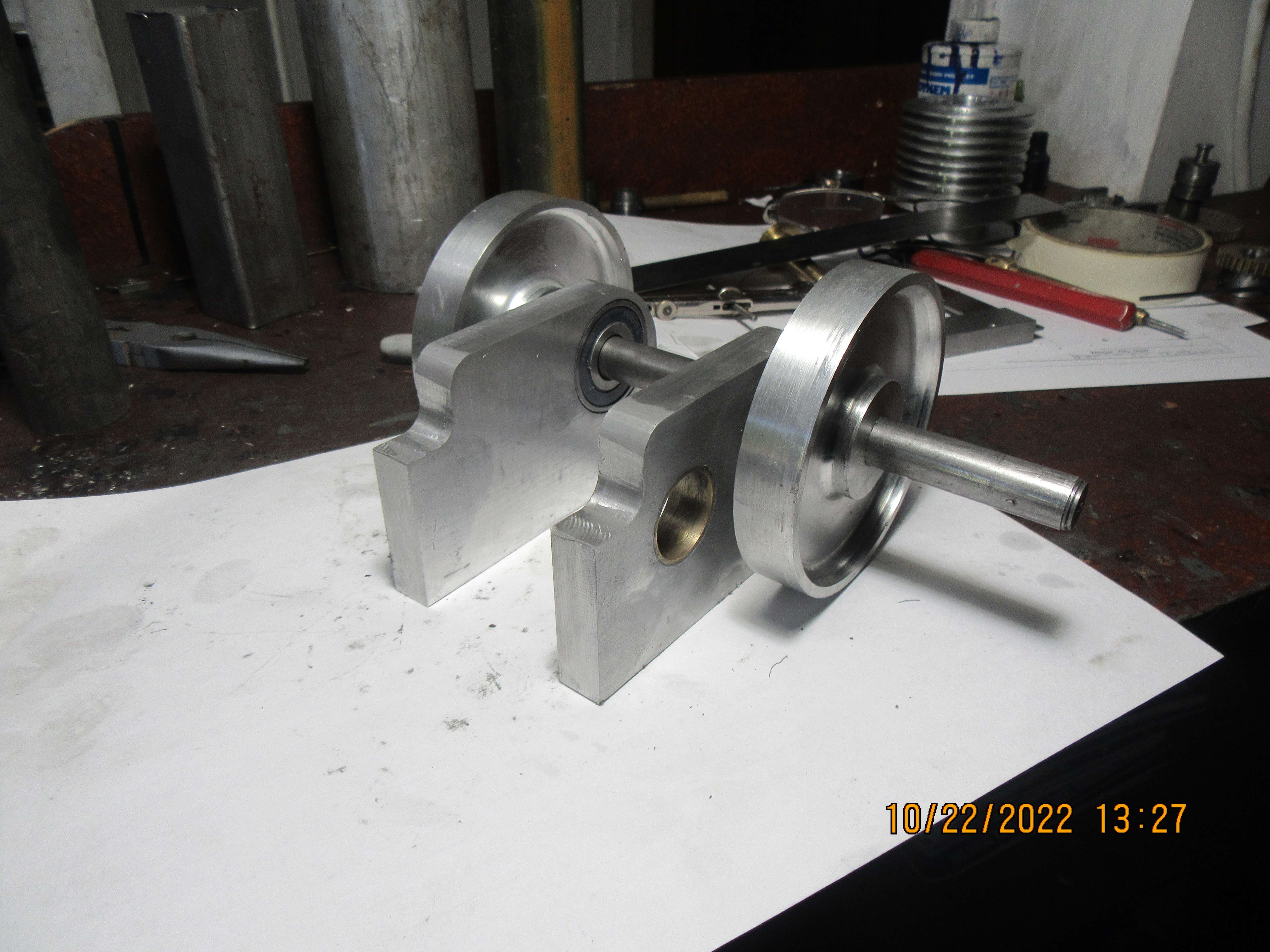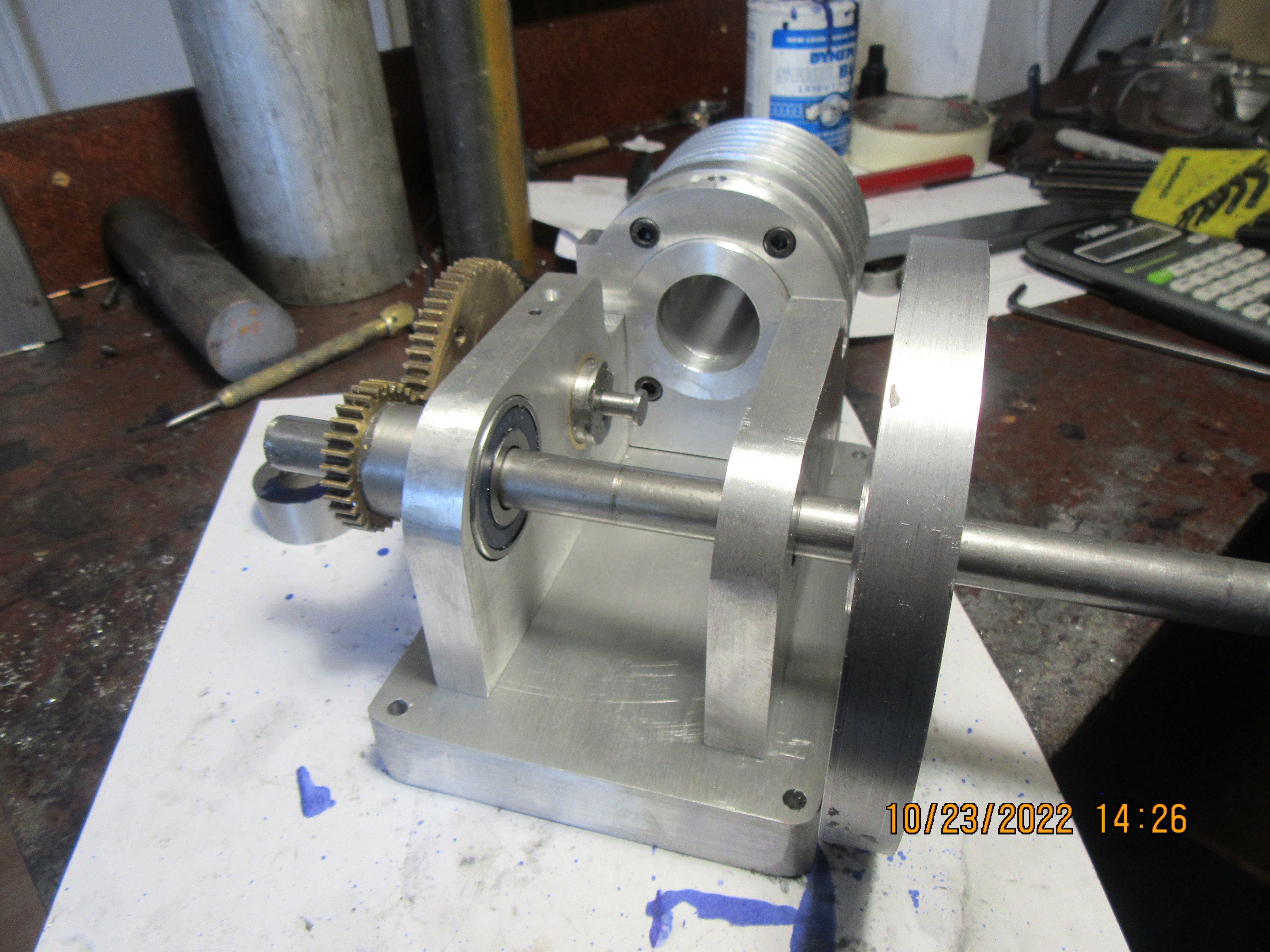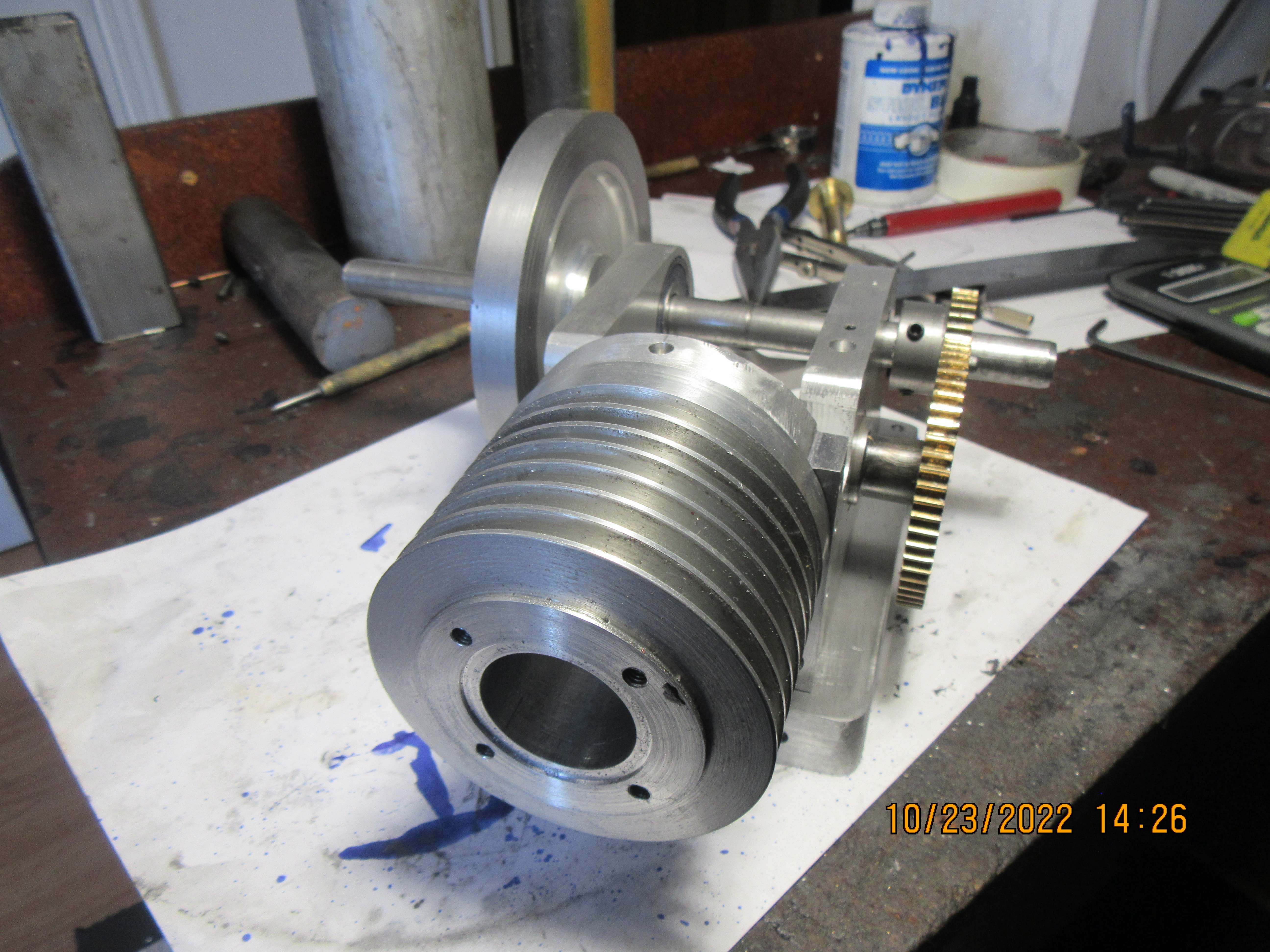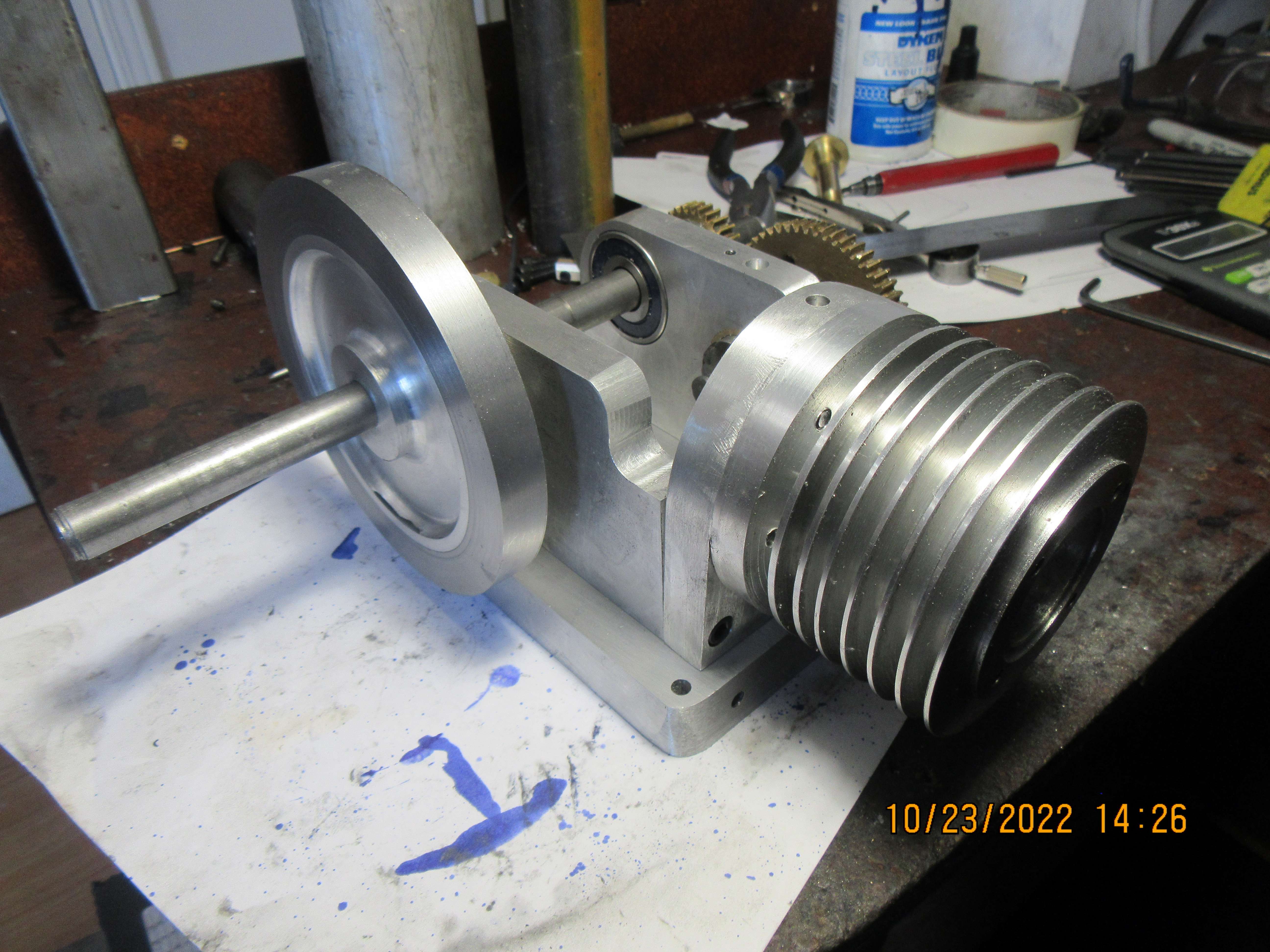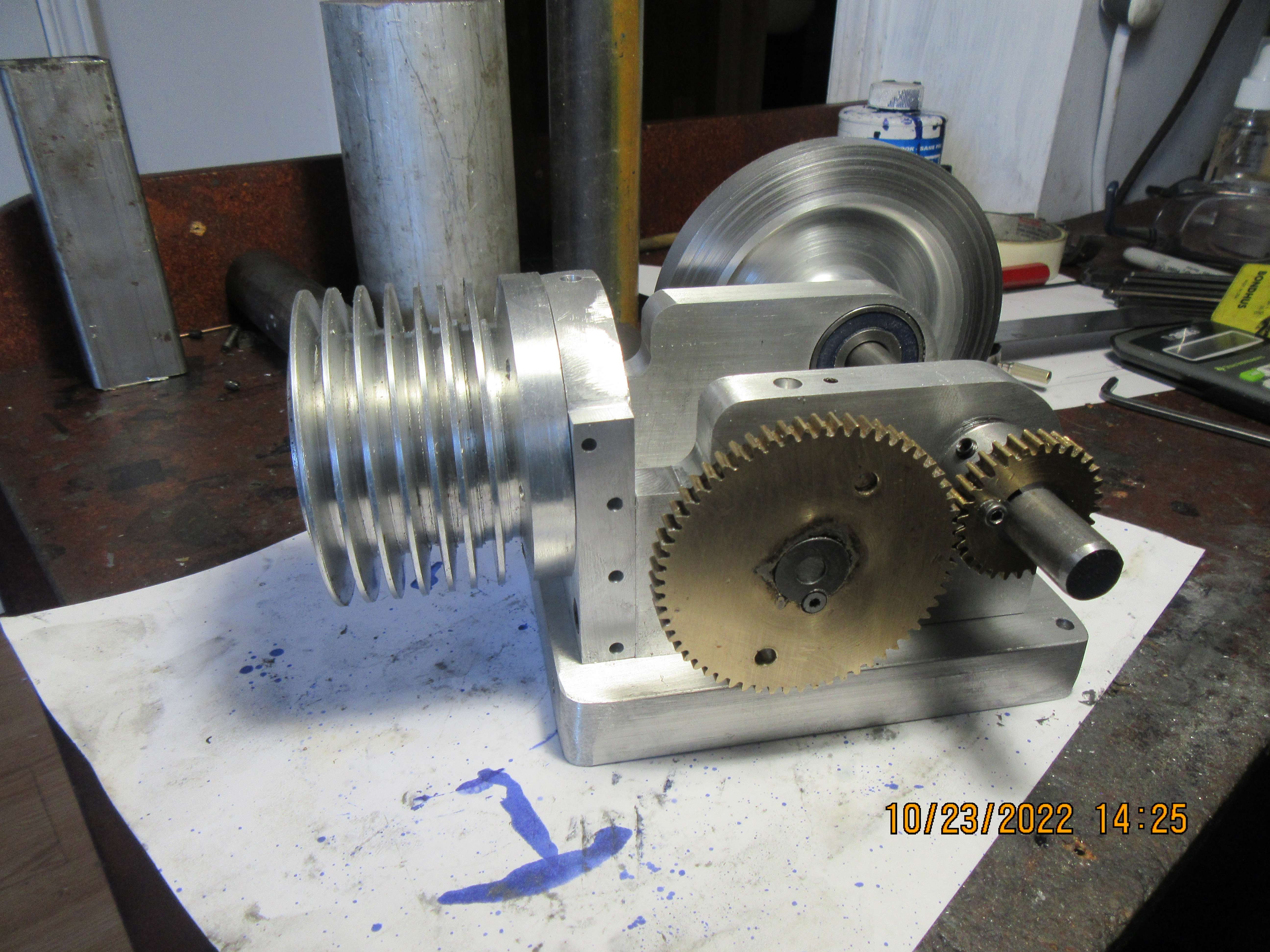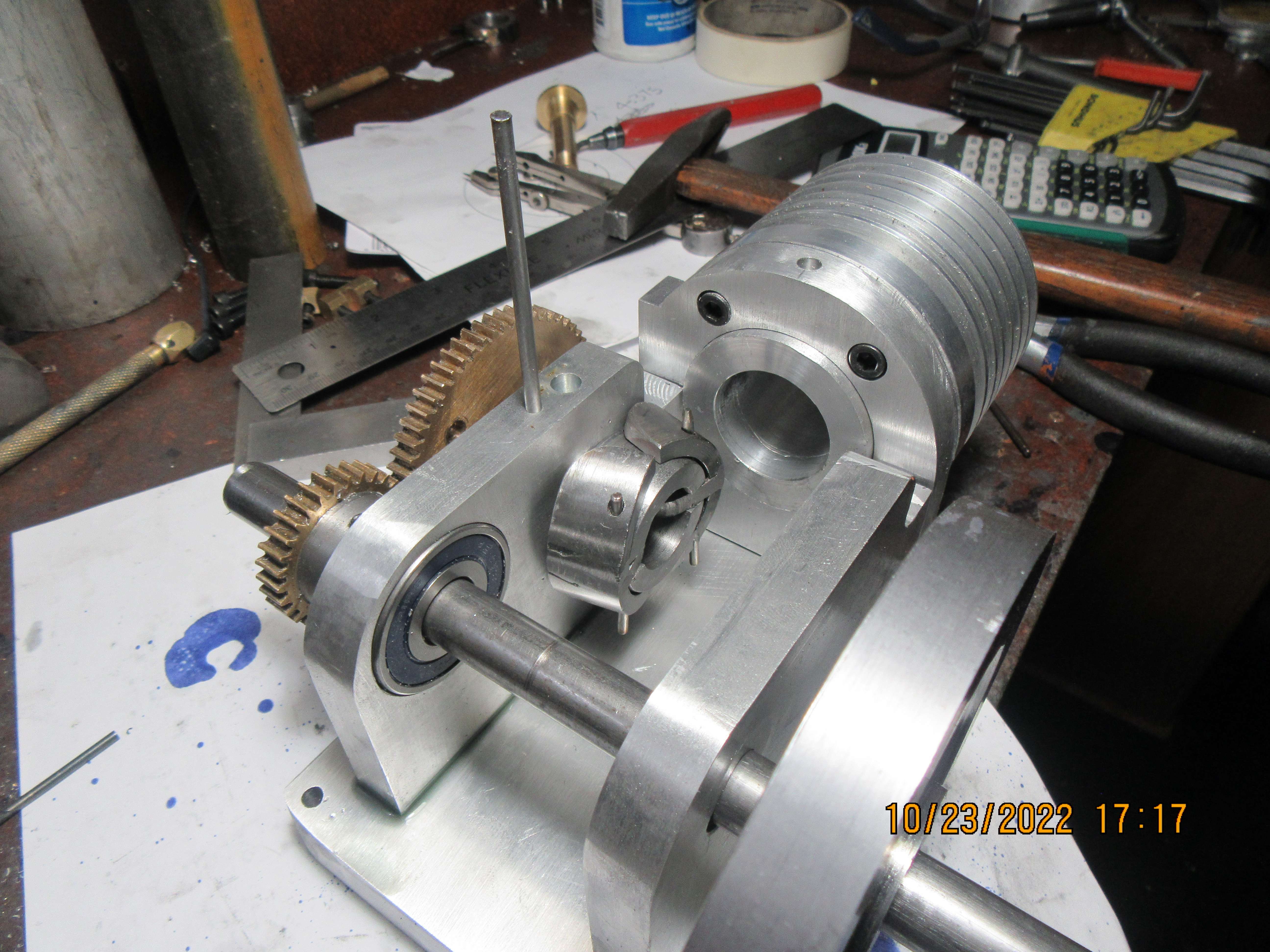Okay---I like this. far end of gas tank is flush with far side of base, near side extends far enough beyond cylinder and base to allow room for the filler spout and cap. It also leaves the far end of the base clear so I can mount my ignition condenser there.
